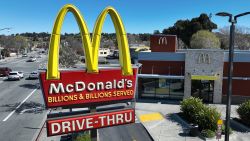The Federal Reserve’s preferred inflation gauge moved even higher in December, driven largely by rising energy prices as well as food. However, a closely watched measurement of underlying inflation trends indicated some progress in the fight to rein in price hikes.
The Personal Consumption Expenditures price index rose 2.6% in December from the year before, heating up from November’s 2.4% increase, according to new Commerce Department data released Friday.
On a monthly basis, prices rose 0.3% as compared to 0.1% in November.
That acceleration was in line with economists’ expectations, which called for a 0.3% increase from November and a 2.6% annual gain, according to FactSet consensus estimates.
The core PCE price index, which excludes the more volatile components of gas and food, hit expectations on the nose: It rose 0.2% from November and the annual rate of underlying inflation held pat at 2.8% for the third month in a row, according to the report.
Inflation has cooled substantially since peaking in the summer of 2022, and that progress continued through 2024 to the point where an elusive “soft landing”— price stability without having the economy tank into a recession — remained achievable as Joe Biden wrapped up his presidency.
Consumers are spending more…
The PCE price index is part of the Commerce Department’s monthly Personal Income and Outlays report, which includes comprehensive data on how Americans earn, spend and save.
And in December, they ramped up their spending significantly.
Consumer spending shot up 0.7% from November, exceeding economists’ expectations for a 0.5% gain.
With Thanksgiving landing late in November, the holiday shopping season was largely concentrated in December; however, economists also believe consumers are buying more durable goods in anticipation of tariffs that have been threatened by President Donald Trump.
Purchases of TVs, technology products and autos have notably surged, Samuel Tombs, Pantheon Macroeconomics’ chief US economist, wrote in a note to clients on Friday.
Trump on Thursday reiterated plans to slap a 25% tariff on imports from both Canada and Mexico.
“Consumers shop with an eye on bargains, and 25% tariffs of the imports of America’s two largest trading partners could force prices of store-bought goods well beyond the reach of many if not all consumers,” economist Chris Rupkey of FwdBonds wrote in commentary on Friday. “There may not be another full-blown cost of living crisis, but the future with tariffs certainly looks less affordable for all Americans.”
“We are not sure the country is willing to pay the price for the new administration’s social goals of stopping migrants and illicit drugs at the border,” he added.
…But they’re saving less
The sheer rate of spending does not appear to be sustainable, Pantheon’s Tombs noted.
Households’ personal saving rate — savings as a percentage after tax — was the lowest in two years, Commerce Department data shows. The saving rate dropped to 3.8% from 4.1% in November, according to Friday’s report.
“It now is 2 percentage points below its 2015-to-19 average,” Tombs said.
This story is developing and will be updated.
























